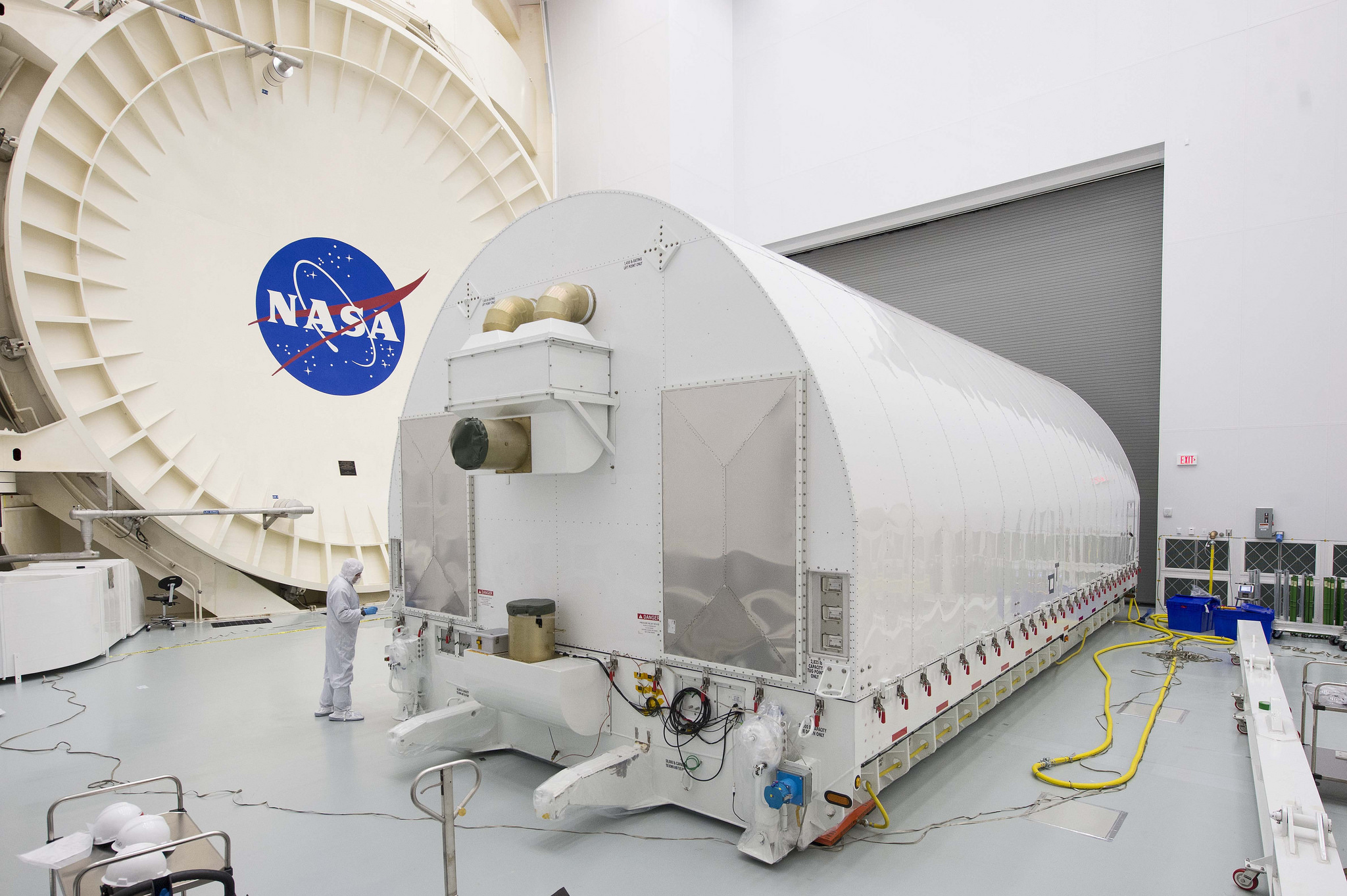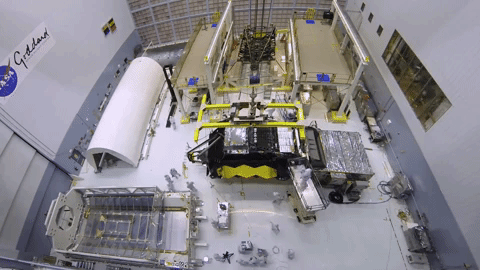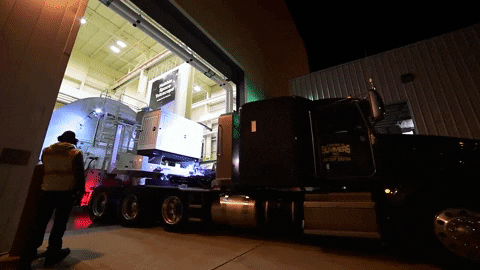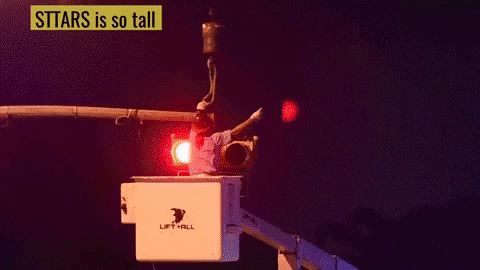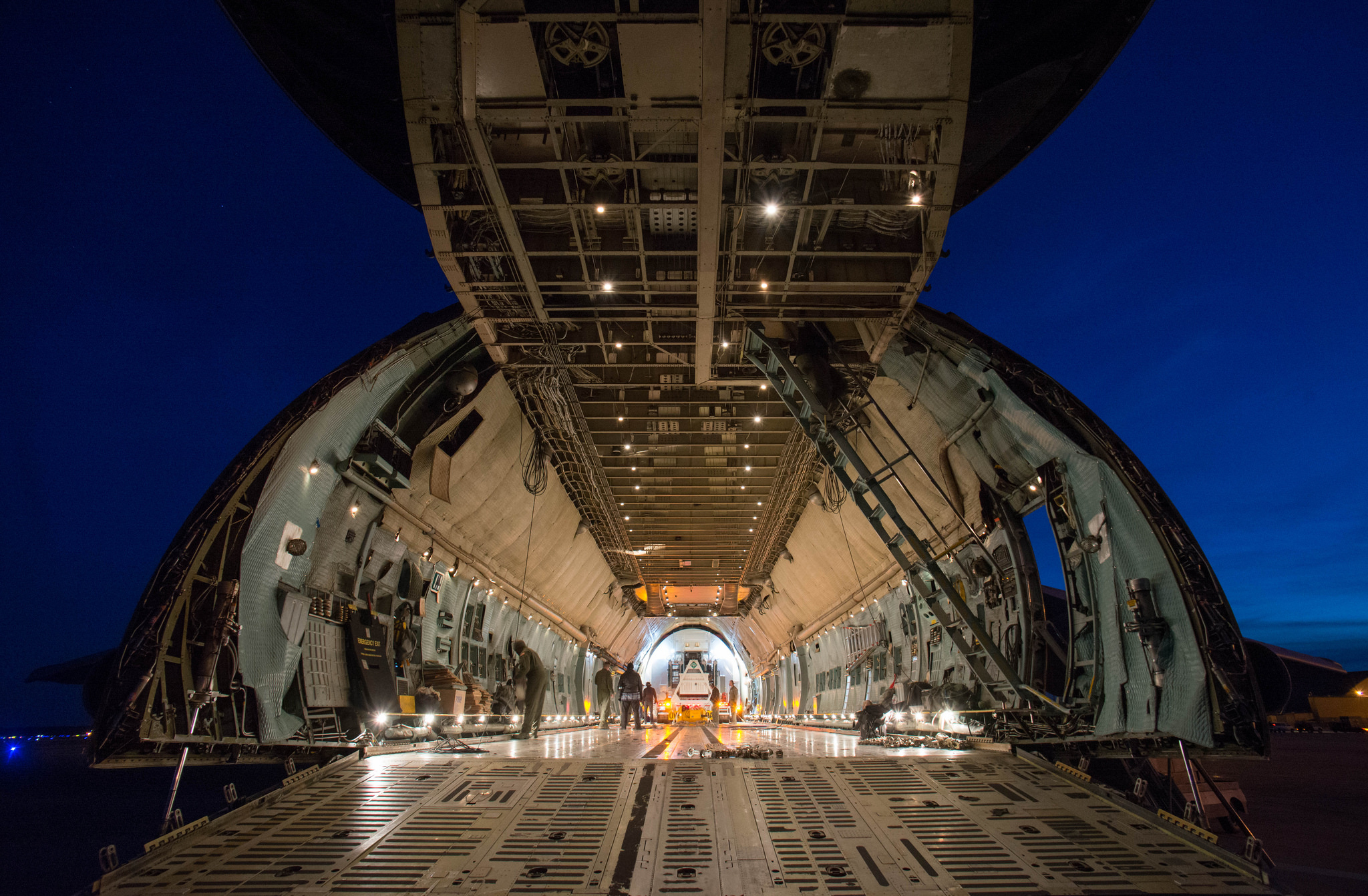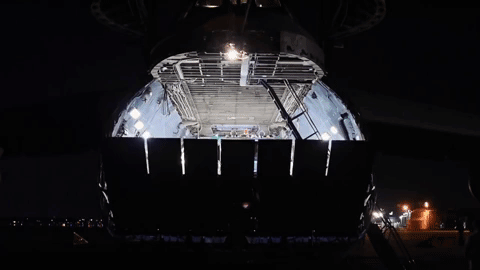NASA’s James Webb Space Telescope will soon be on the move, and in order to find it, you will need to follow the STTARS.
Webb telescope, or Webb, is NASA’s upcoming infrared space observatory, which is scheduled to launch in 2019. Transporting something as large and as delicate as Webb is no easy task. Enter the Space Telescope Transporter for Air, Road and Sea — or STTARS — a specially engineered shipping container that safely carries Webb from one location to another.
Webb’s combined science instruments and optics completed cryogenic testing at NASA’s Johnson Space Center in Houston in November 2017, and soon the telescope will take a drive and a flight to meet its other half — the combined spacecraft bus and sunshield, called the spacecraft element, at Northrop Grumman Aerospace Systems in Redondo Beach, California. There they will combine to form the complete James Webb Space Telescope observatory.
Packing for the trip and planning the route
From Johnson, Webb will drive to a nearby airfield, where a U.S. military C-5 Charlie aircraft will be waiting to fly the telescope to Los Angeles. Before heading to the airport, Webb is carefully packed inside the colossal STTARS container. STTARS measures 15 feet (4.6 meters) wide, 17 feet (5.2 meters) tall, and 110 feet (33.5 meters) long, and it weighs almost 165,000 pounds (approximately 75,000 kilograms). This dwarfs Webb in terms of mass; the telescope weighs approximately 14,000 pounds (about 6,350 kilograms) here on Earth.
Despite the container’s size, it is still not big enough to fit Webb’s fully deployed 21.3-foot (6.5-meter) primary mirror and secondary mirror support structure. Before Webb is packed inside STTARS, engineers must fold both primary mirror wings and the secondary mirror tripod, which is the same configuration the telescope will have when it is loaded into its rocket for launch.
Charlie Diaz, the logistics and launch site processing manager for Webb at NASA’s Goddard Space Flight Center in Greenbelt, Maryland, is in charge of the telescope’s transportation. He and his team are responsible for meticulously planning Webb’s entire journey to the launch pad in French Guiana. They analyze each road Webb will take, every intersection it will cross, and every bridge it will traverse to ensure the STTARS container and its precious cargo can safely pass.
Diaz and his team use satellite imagery and analysis from the field to plan Webb’s routes. “We actually drive the routes and survey them with police and escort vehicles,” explained Diaz. He added that each route takes about a week to survey.
At the end of each survey, Diaz and his team make recommendations about how to improve the route before STTARS arrives, such as filling potholes or trimming trees. They also plan alternate travel routes to accommodate any unforeseen events, and identify potential “safe havens” for Webb along the route — locations where they can perform required maintenance on STTARS while safeguarding the container and its escort personnel.
Overland travel with an oversized load like STTARS comes with several limitations, which makes proper planning even more critical. STTARS’ immense size means it has a large turning radius. Tractor trailer trucks, which have an average length of about 50 feet (15.2 meters), often make wide turns through intersections because of their size. Now consider that STTARS is double that length. STTARS’ immense weight means that not every bridge, overpass or culvert can safely support it. Additionally, Diaz said STTARS is restricted to a midnight-to-6 a.m. travel window. If the route takes STTARS longer than that six-hour window, the personnel transporting it must rely on one of the “safe havens” Diaz and his team identified.
Departing Johnson
En route to the airfield, Webb will get carefully chauffeured by a semi-truck with a police escort. The ride there is slow — approximately 5 mph (8 kph). In addition to the police escort, which helps direct late-night traffic around the convoy as well as protect it, STTARS relies on support from other vehicles like bucket trucks — to move traffic lights — and resupply trucks, which deliver gas for the generators that provide power to STTARS, its monitoring systems and its hydraulics.
Engineers use hydraulics in the front and rear of STTARS to adjust its height between about 16 feet (4.9 meters) and about 20 feet (6.1 meters), which helps it clear some overhead obstructions, such as traffic lights. STTARS is actually so tall that, even with the lowering capability, some traffic lights still need to be moved out of the way so it can pass safely underneath without damaging them.
A private flight, courtesy of the U.S. military
The C-5 Charlie that Webb flies aboard is the largest transport aircraft in the U.S. military’s fleet, and though the plane’s spacious belly was designed to carry U.S. military tanks (and could fit a submarine), there is a less than 1-inch margin between the STTARS container and the top threshold of the goliath transport’s cargo hold. It is a tight fit, but Diaz and his team carefully calculated the clearance STTARS would have by using a model of the aircraft. Each move they make when loading the container is a deliberate one; they pull it into the aircraft at a rate of about 1 inch per minute.
“We move very slowly with an electric winch, and as you can imagine all tarmacs are not level, so we have to make constant adjustments to STTARS as we load,” explained Diaz.
The forces during takeoff and landing are the most dangerous part of the flight for Webb. For a commercial flight, imagine the acceleration you feel as the pilot throttles the airliner’s engine to get airborne, and the deceleration you feel when the pilot hits the tarmac and the brakes upon landing. STTARS has an isolation system that minimizes these forces, but the potential impact is further lessened through skillful handling of the aircraft. Diaz said the U.S. Air Force pilot who flew the C-5 from Maryland to Texas landed the aircraft so smoothly that he did not realize they had arrived.
“STTARS” treatment in Los Angeles
Los Angeles is known for rolling out the red carpet for the many famous movie stars who live there, and when Webb lands in the city, a new “star” will be among their ranks. After landing, Webb will make an overland journey to Northrop Grumman’s facility in Redondo Beach, a coastal city in Los Angeles’ greater metropolitan area. Though it is not a limousine, the STTARS container has a style of its own, and chances are Webb won’t want for attention during one of its final overland trips before being launched into space from Kourou, French Guiana, in 2019.
When all of Webb observatory’s components are integrated at Northrop Grumman, including its tennis court-sized sunshield (which will be neatly and carefully folded around Webb), STTARS will be upgraded with a larger lid to accommodate the observatory’s size. It will also get a new name: the Super Space Telescope Transporter for Air, Road and Sea.
That’s right — “Super STTARS.”
***
The James Webb Space Telescope is the world’s premier infrared space observatory of the next decade. Webb will solve mysteries of our solar system, look beyond to distant worlds around other stars, and probe the mysterious structures and origins of our universe and our place in it. Webb is an international program led by NASA with its partners, ESA (the European Space Agency) and the Canadian Space Agency (CSA).
For more information about Webb, visit: www.webb.nasa.gov or www.nasa.gov/webb
By Eric Villard
NASA’s Goddard Space Flight Center, Greenbelt, Md.























